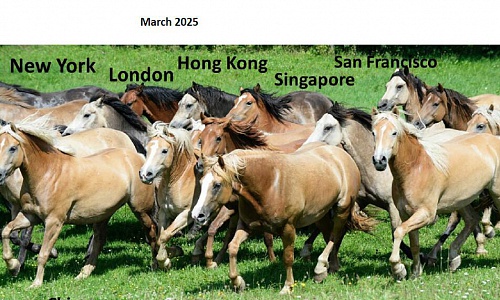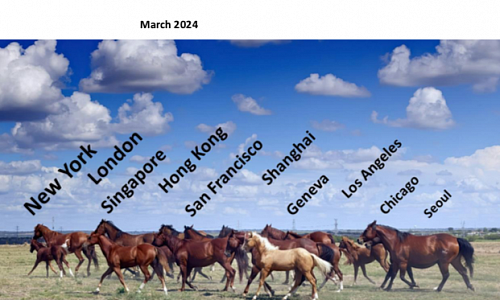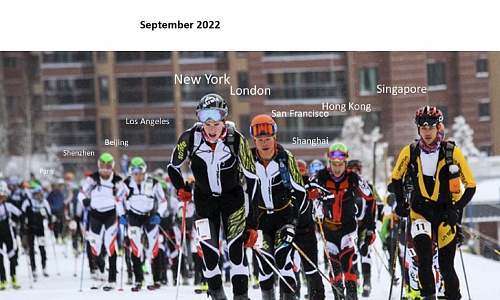
Date: March 20, 2025
Following the Spring Festival, economy regained momentum in February as businesses resumed operations, accelerating production and commercial activity. Key indicators such as the Manufacturing Purchasing Managers’ Index (PMI), Non-Manufacturing Business Activity Index, and Composite PMI Output Index all rebounded month-on-month, remaining in expansionary territory. While these figures signal a tentative recovery from earlier lows, sustaining growth will demand stronger policy reinforcement and expedited implementation.
Economic Recovery Shows Marginal Improvement from Low Levels
In February, the Composite PMI Output Index rose by 1.0 percentage points from the previous month to 51.1%, returning to expansion territory. The Manufacturing PMI, up 1.1 percentage points to 50.2%, emerged as the primary growth driver. A breakdown of the index shows that both production and demand within the manufacturing sector improved, with the Production Index and New Orders Index rising by 2.7 and 1.9 percentage points, respectively, to 52.5% and 51.1%. Both indices entered expansion territory, indicating a notable improvement in manufacturing supply and demand. This resurgence bolstered corporate confidence, pushing the Purchasing Volume Index up by 2.9 percentage points to 52.1%. On the non-manufacturing side, the Non-Manufacturing Business Activity Index edged up 0.2 percentage points to 50.4% in February.
Export Disruptions Due to Tariffs and "Front-Loading"
From January to February, Merchandise exports grew 3.4% year-on-year, though this was a slight moderation compared to full-year 2024 and December figures. Trade with the U.S. expanded at a slower pace, with exports rising 2.9% year-on-year—5.1 percentage points lower than in December 2024—partly reflecting adjustments to U.S. tariff hikes. Meanwhile, shipments of products that retain a competitive edge under current tariff conditions, such as smartphones and laptops, saw a boost, possibly as exporters sought to stay ahead of potential U.S. trade restrictions. However, taking into account two fewer working days in January-February 2025 compared to the same period in 2024, the year-on-year export growth rate would have been higher if measured on a per-working-day basis.
New Growth Drivers Accelerate Industrial Expansion
Industrial output from large-scale enterprises grew 5.9% year-on-year in January-February, extending the robust momentum seen since Q4 2024. The pace edged up 0.2 and 0.1 percentage points from the fourth quarter and full year of 2024, respectively. Externally, export momentum sustained industrial expansion, with export delivery values rising 6.2% year-on-year—1.1 percentage points faster than 2024’s annual rate. Domestically, policies such as large-scale equipment upgrades and consumer trade-in programs, expanded in 2025, spurred industrial modernization and unlocked consumption potential, further driving growth. On the supply side, equipment manufacturing and high-tech industries led the charge, with rapid growth continuing to optimize the industrial structure.
"Two Major" Projects Fuel Investment Growth
In January and February, investment increased by 4.1% year-on-year, up by 0.9 percentage points compared to the whole of last year. First, support for "Two Major" projects (advancing national strategic initiatives and enhancing key security capabilities) has strengthened, with physical work volumes picking up, driving a faster growth in infrastructure investment. Infrastructure investment rose by 5.6% year-on-year in January and February, accelerating by 1.2 percentage points from 2024, contributing 1.1 percentage points to overall investment growth. The "Two New" policies (promoting large-scale equipment upgrades and consumer goods trade-ins) have been further expanded, with their effects becoming increasingly evident, spurring rapid growth in equipment investment. Second, progress in the high-quality development of key industrial chains is solid, with the transformation of traditional industries accelerating, leading to strong growth in manufacturing investment. Third, real estate policies have mitigated the decline in investment, showing early signs of stabilization.
Trade-In Programs and Green Consumption Boost Retail Sales
In January and February, retail sales grew by 4.0% year-on-year, with goods retail increasing by 3.9% and catering revenue rising by 4.3%. The growth in consumer spending was driven by the expansion of trade-in policies, which quickly unlocked demand for appliances and electronics. Meanwhile, the increasing focus on green and health-conscious products fueled strong growth in the eco-friendly and wellness sectors. Additionally, a surge in travel and leisure activities led to a rapid increase in spending on transportation, accommodation, and related services, highlighting a broader recovery in consumption.
Efforts Needed to Stimulate a Balanced Price Recovery
In February, China’s Consumer Price Index (CPI) fell 0.2% month-on-month and 0.7% year-on-year, reflecting the combined impact of Chinese New Year timing, holiday effects, and volatile global commodity prices. The year-on-year decline was primarily driven by a high base effect: food and service prices surged during February 2024’s holiday period, inflating the comparison base and putting downward pressure on this year’s figure. Food prices dropped 3.3% year-on-year, accounting for over 80% of the CPI decline (contributing 0.6 percentage points to the total 0.7% drop). This sharp contraction in food costs—the largest drag on prices—tipped the CPI into deflationary territory. Meanwhile, the Producer Price Index (PPI) continued to decline due to seasonal industrial sluggishness and softer global commodity prices. However, both month-on-month and year-on-year PPI decreases narrowed by 0.1 percentage points, signaling easing deflationary pressures.








